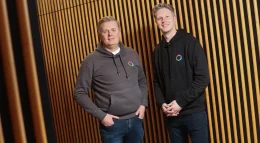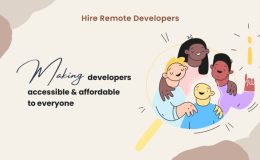Article from Bagel Belly Blog:
Word is finally out about the Intel-Samsung ‘merger’ of their Linux platforms. In a single step, a number of crippled initiatives are given new legs, and the mystery behind the stories of Intel abandoning MeeGo and Samsung acquiring MeeGo are resolved.
- Jim Zemlin, Welcome Tizen to the Linux Foundation: Tizen is a Linux-based, open source platform designed to address the future of HTML5-based applications across a variety of device types.
- Dawn Foster, Welcome to Tizen: Tizen will support multiple device categories, such as smartphones, tablets, smart TVs, netbooks, and in-vehicle infotainment devices.
- Imad Sousou, What’s Next for MeeGo: I want to personally thank everyone who has participated in MeeGo over the past year and a half, and I encourage you to join us at Tizen.org.
- Morgan Gillis, LiMo Global PR: “a well-timed step change which unites major mobile Linux proponents within a renewed ecosystem with an open web vision of application development which will help device vendors to innovate through software and liberalize access to consumers for developers and service providers” (and see also LiMo&Tizen for what’s actually happening there).
MeeGo has been floundering with a lack of mobile adoption. Nokia never really engaged with MeeGo, instead continuing development internally on Maemo whilst throwing bits over the wall into MeeGo. Since Nokia walked away from Maemo/MeeGo, Intel has been desperate to find another large mobile device manufacturer to pick up the platform and ship handsets. Intel understand that a successful community requires diversity in the committer base, and having just one dominant organisation (or even two dominant organisations) is not enough to ensure success.
Intel also understands, as has been proven time and again, that a platform without shipping devices is dead. The devices provide the market of consumers, they provide the reference hardware, but more importantly they provide an enormous degree of confidence in a platform – a feeling that it is real, tangible, and that it works. It’s not good enough to say you have a huge number of network operators or handset manufacturers backing your platform – you need devices, and you need consumers interested in buying them. (Of course having handsets is not enough – look at Bada – but it’s a critical ingredient.) Intel is in a tough position here, as it doesn’t have much leverage over handset manufacturers, who aren’t shipping Intel chips.
Many people were nervous of MeeGo because of the platform’s emphasis on Qt. Unfortunately, public perception is that Qt is owned by Nokia, regardless of license, community, or governance. But at the same time, Qt brought a rich developer story – a solid SDK, a pool of developer talent (Qt is used in a far wider range of devices than just mobile handsets), well-developed APIs, extensive documentation, and more recently a potential route to market through Intel AppUp.
In order for Intel to bring other companies on board, they needed to cut all ties with Nokia and make a concession by losing Qt. But if you’re throwing out Qt, the value proposition of MeeGo needs to be reconsidered. Without Qt, MeeGo doesn’t have the rich developer story – no APIs, SDK, documentation. You need an alternative.
Enter Samsung. What are they bringing to the party, beside being a prodigious handset manufacturer? Samsung Linux Platform, or SLP. You can still see references to SLP in the Samsung Mobile Innovator knowledgebase. This blog post from Jeff Hoogland gives some insight into SLP. SLP was one of the reference implementations contributed to LiMo and in fact the SLP team had become LiMo Foundation’s leading contributor.
It seems likely that SLP will form the majority of Tizen moving forward. It has APIs, SDK, documentation, and most important of all, significant investment from a large mobile manufacturer that isn’t Nokia. And Samsung aspires to topple Apple and achieve Nokia’s former industry dominance. That’s a position Intel can understand and invest in.
More from Dawn: “The Tizen application programming interfaces are based on HTML5 and other web standards, and we anticipate that the vast majority of Tizen application development will be based on these emerging standards.” What are these other standards? The LiMo Foundation PR states: “Tizen combines the best open source technologies from LiMo and the Linux Foundation and adds a robust and flexible standards-based HTML5 and WAC web development environment within which device-independent applications can be produced efficiently for unconstrained cross-platform deployment. This approach leverages the robustness and flexibility of HTML5 which is rapidly emerging as a preferred application environment for mobile applications and the broad carrier support of the Wholesale Applications Community (WAC).”
Tizen is therefore also a politically expedient way of repurposing LiMo and WAC in order to justify the huge network operator spend that has so far resulted in two failed mobile consortiums with little to show for themselves. This has the dual benefit of gaining widespread industry backing and also of making the operators look good. As Tomi Ahonen writes, you need the network operators on side to ensure they ship your devices. This was likely a lesser consideration of Intel in this move, a convenient by-product. It may prove a critical factor in future Tizen handset ranging.
So we have Tizen with a web runtime and an app development story around HTML5 and web standards. But the challenge remains that there are certain classes of apps (and developers) that demand a native story. Whilst you can do an enormous amount with Javascript and HTML (as demonstrated by WebOS), sometimes you need a lower-level approach. Tizen has this covered. Dawn again: “For those who use native code in their applications, the Tizen SDK will include a native development kit.”
The trouble with claiming a native approach is that to provide a native developer kit you need a well-defined software stack and a set of APIs (much like the Qt offering). But Imad states “Emphasizing HTML5 means that APIs not visible to HTML5 programmers need not be as rigid, and can evolve with platform technology and can vary by market segment.” I look forward to understanding how this justification for abandoning MeeGo works out in the context of a native developer SDK.
From Imad’s hint about varying by market segment, I suspect what we might be talking about here (at least in the beginning) is multiple platforms. MeeGo for IVI (since Genevi is already a long way down that road), MeeGo for tablets (Ahonen blogs “some analyst house, might be Strategy Analytics or Gartner Dataquest, said they expect half a million MeeGo tablets sold this year“), and SLP for both tablets and phones. It’s going to be a confusing strategy, and worse even than the MeeGo/Maemo schizophrenia.
How open will Tizen be? Dawn: “We will open the entire Tizen software stack, from the core OS up through the core applications and polished user interfaces. We expect the first release of Tizen and its SDK in the first quarter of 2012. We will post additional details about this project in the coming weeks, including the code, developer documentation, and more.” Watch closely to see if the code does make it out. Some SLP code is already available on Gitorious under Samsung Linux Platform, though only a very few components at this point, and it’s not clear if this will be Tizen or not.
Watch Tizen even more closely to see if there is open collaboration rather than closed development and code dumps. Samsung is a product company, they don’t understand platforms, and it’s going to take a long time for their internal development methodologies to open up (if they ever do). It will be interesting to see who does the bulk of the work that takes place in the open.
What are the metrics by which we can measure the success of Tizen? I’d propose a few:
- a unified platform (not disparate platforms for different form factors)
- availability of source code
- open collaborative development
- clear and open governance
- mature web APIs based on open standards
- mature native APIs
- mature SDK and emulator
- devices shipping from more than one manufacturer and in more than one form factor
- route to market for developers (an app store of some description)
- significant developer adoption and mindshare
- being a credible alternative to Android and iOS, as measured by current features, functionality, stability and performance
I think the last two points are going to be a killer for Tizen. With the first release targeted at 2012, it will arrive after iOS 5 and Ice Cream Sandwich. It’s unlikely to be remotely as complete as either platform. I almost expect Samsung to turn around and say that Bada is Tizen, if only because they have no chance of making both platforms a success.
I actually wish Tizen the best of luck – I continue to believe the mobile industry needs a truly open platform, and that real value and innovation can be unlocked once we have one. But I wish we could get there without these constant platform resets and political posturing, and that we could just approach the problem through open development and technical merit in the way that desktop linux has already achieved.
Source Bagel Belly Blog

















